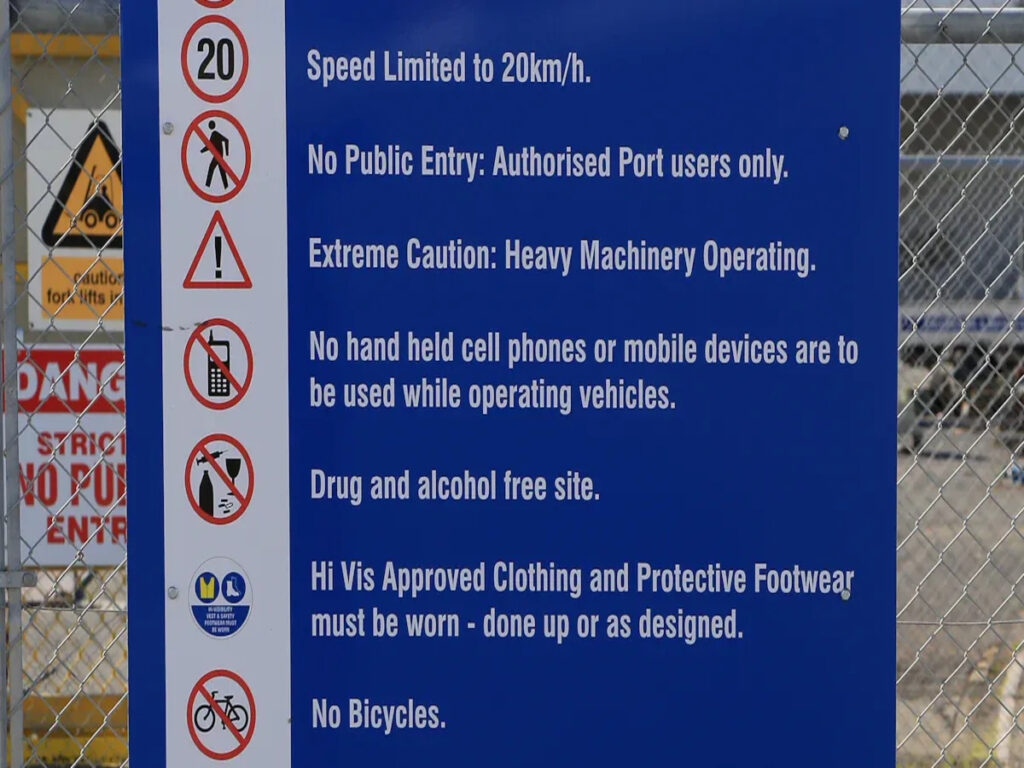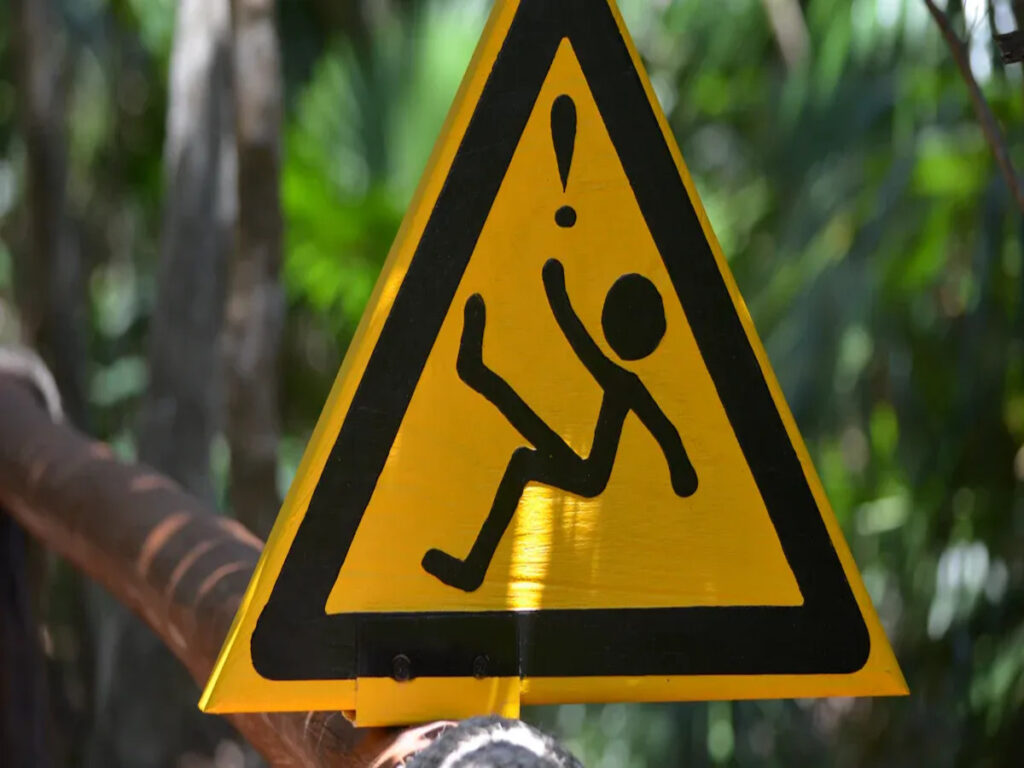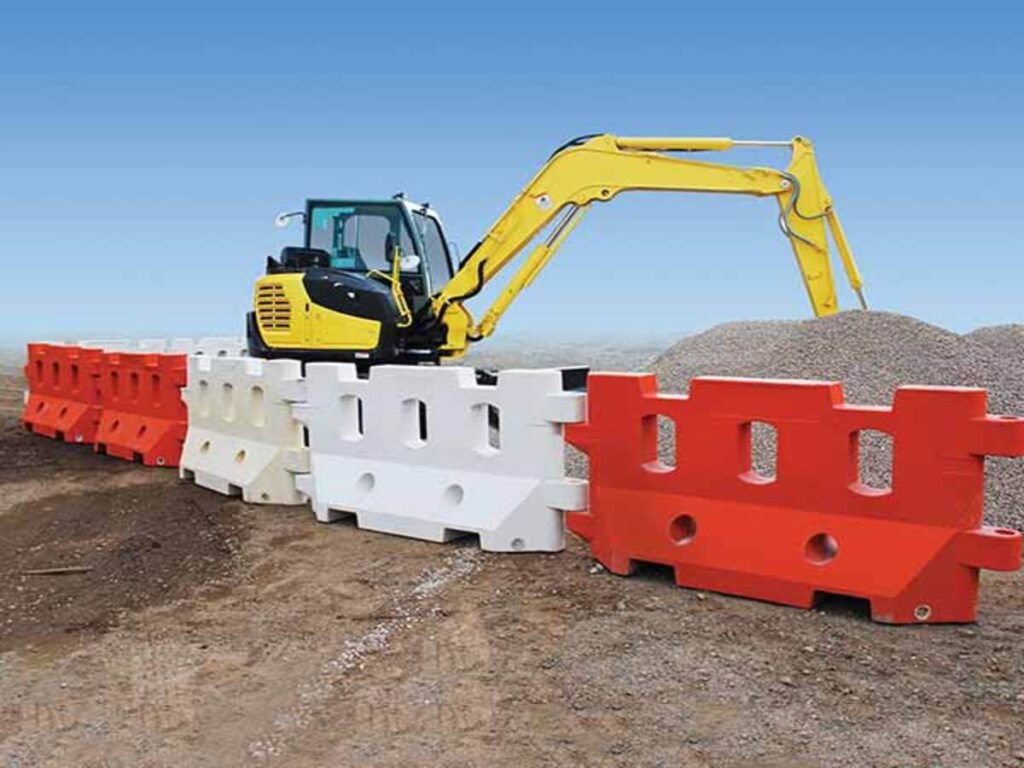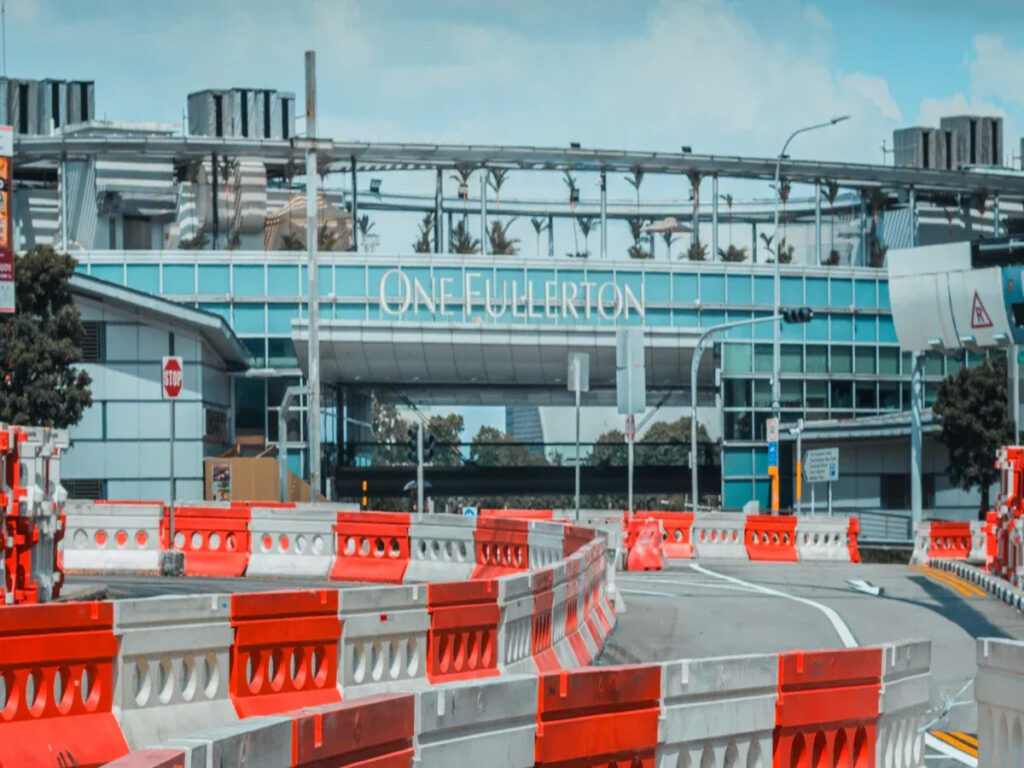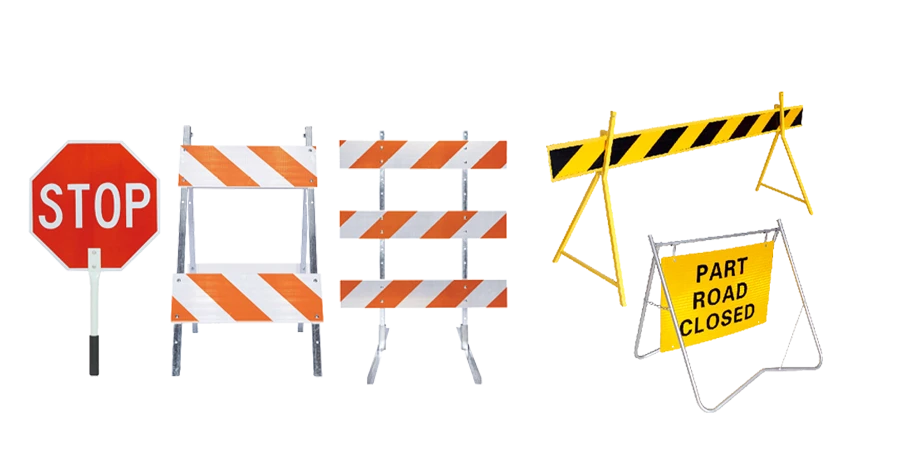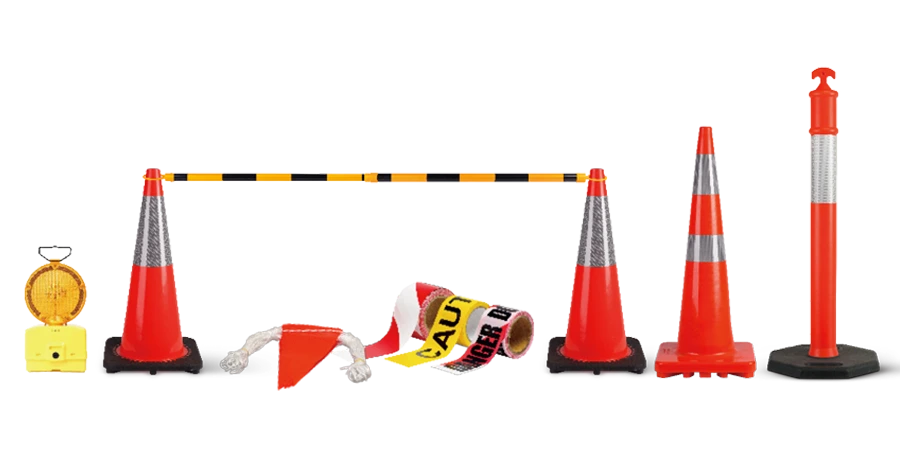
Potholes are causing big problems on UK roads. Drivers feel annoyed, and cars get damaged. Almost 500,000 cars broke down after hitting potholes in early 2024. In just September, sur 50,000 cases were reported. Potholes not only ruin trips but also make roads unsafe. They cause one in ten car breakdowns, costing drivers a lot. On average, repairs cost £230 per car.
Traffic cones and barriers are very important for safety. They show dangerous spots and keep drivers away from harm. They protect both drivers and road workers. OPTRAFIC provides cônes de trafic de haute qualité et barrières to ensure safety in hazardous areas like potholes. OPTRAFFIC safety products are built to last and provide clear visibility, helping to reduce accidents and improve traffic management. Whether you need temporary or long-term safety solutions, OPTRAFIC offers the products you need to keep roads safer.
Explore the OPTRAFFIC range of safety products today and make sure your roads are always protected.
Principaux à retenir
- Potholes are a big problem on UK roads. They damage cars and can be dangerous. Fixing roads often can stop potholes and save money.
- Traffic cones and barriers help keep roads safe. They show dangerous spots and protect drivers and workers during fixes.
- Cones and barriers must be placed properly. Sinon, they can confuse people and cause accidents.
- Drivers can get money back for pothole damage. Many don’t know this. Learning how to claim can help pay for repairs.
- Helping councils care for roads and spend wisely makes roads safer. This also reduces potholes.
The UK Pothole Crisis and Its Impact on Road Safety
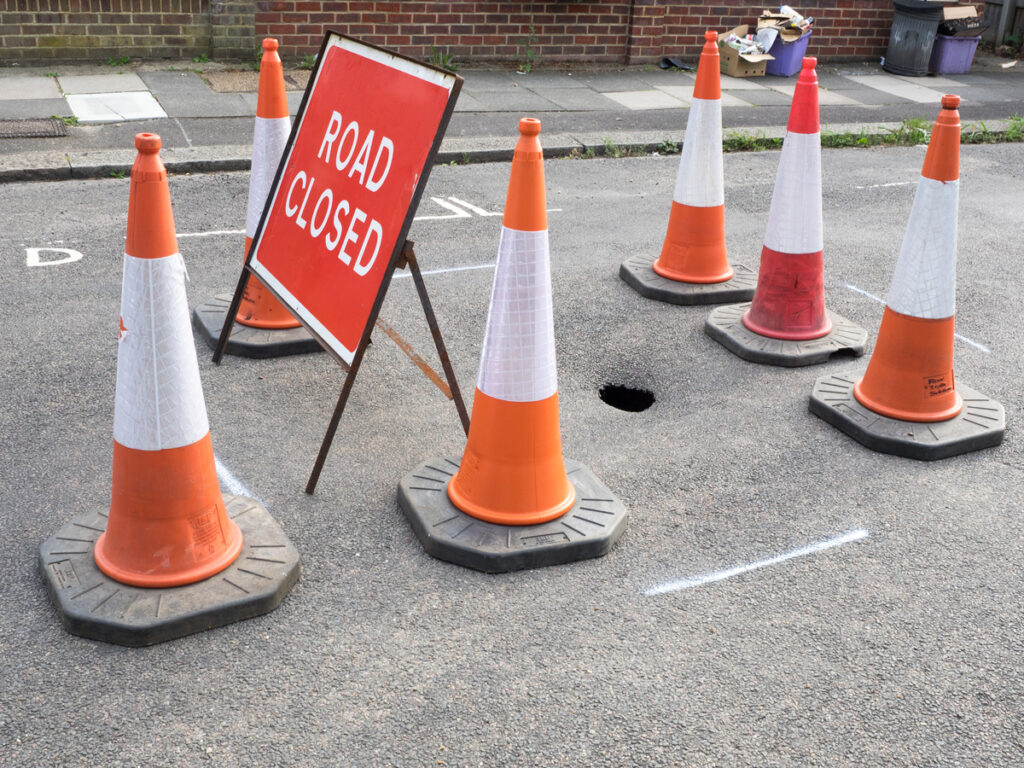
The Scale of the Pothole Problem
Potholes in the UK are causing big problems for everyone. Conducteurs, cyclistes, and walkers are all affected. Last year, pothole-related breakdowns were the highest in five years. In July alone, there were 50,079 callouts for help. This shows how hard it is to keep roads safe. A rainy summer made things worse. Potholes became harder to see, leading to more accidents.
Fixing potholes is a struggle for local councils. Dans 2023, reports of potholes went up a lot. Suffolk had 180% more pothole reports than the year before. Gloucestershire and Kent also saw big increases, à 98% et 92%. Even with repairs, many potholes are still not fixed. This leaves people in danger on the roads.
| Type de preuve | Détails |
|---|---|
| Injuries and Fatalities | Sur 29,000 people were killed or badly hurt on UK roads last year. |
| Pothole-related Breakdowns | July saw 50,079 pothole-related breakdowns, the most in five years. |
| Expert Opinion | Gary Digva says the pothole problem is not taken seriously, risking more injuries. |
| Compensation | Councils paid over £32 million for 5,596 injury claims caused by potholes. |
| Road Conditions | Rainy weather made potholes harder to see, increasing accidents. |
Risks to Vehicles and Road Users
Potholes are dangerous for cars and people. They can ruin tyres, suspensions, and even damage cars badly. Dans 2023, UK drivers spent nearly £500 million fixing pothole damage. Most drivers, 83%, paid for repairs themselves. Many don’t know they can claim money back. À propos 42% of drivers are unaware of this right.
The dangers are not just about money. Depuis 2017 à 2021, bad road surfaces caused 1,114 accidents. These led to 355 serious injuries and 16 deaths. Cyclists and motorcyclists are at even greater risk. Hitting a pothole can cause crashes that are very dangerous.
Many drivers now avoid roads with lots of potholes. À propos 46% of drivers change their routes to stay safe. This causes traffic jams on other roads. Fixing potholes is key to making roads safer and helping people trust the UK’s transport system again.
Traffic Cones and Barriers: Key Tools for Road Safety

Handling Immediate Dangers
When you see a pothole, cones and barriers help first. These tools keep you and others safe from danger. They mark risky spots so you can spot them early. This helps you drive carefully and avoid accidents. It also keeps traffic moving smoothly.
Cones and barriers are made to catch your eye. Their bright colours and reflective strips make them easy to see. Even in bad weather or at night, they stay visible. Par exemple, reflective strips on cones shine in the dark. This helps you stay safe while driving.
Councils use cones and barriers until roads are fixed. Sans eux, you might hit a pothole without knowing. This could harm your car or even cause injuries. These tools act as shields, protecting you and others from harm.
Staying Safe During Repairs
Roadworks are common as councils fix potholes. During repairs, cones and barriers keep roads safe. They create safe zones, keeping you away from work areas. They also protect workers from passing cars.
Cones must follow strict rules to keep everyone safe. They need to be seen clearly, so reflective strips or lights are added. Only trained people can place cones on public roads. This ensures proper use and reduces risks for everyone.
If traffic cones are used wrongly, it can cause problems. Bad placement can confuse drivers and lead to crashes. Unauthorised use can also bring legal trouble. This shows why cones must be used correctly.
By marking work zones, cones and barriers guide you safely. They reduce delays, arrêter les accidents, and help repairs finish faster. These tools are not just helpful; they are vital for keeping roads safe.
Evaluating the Effectiveness of Traffic Cones and Barriers
Benefits in Reducing Accidents
Traffic cones and barriers help make roads safer. They warn you about dangers like potholes or roadworks. By marking these spots, they lower the risk of accidents. You can see them from far away and adjust your driving. This helps avoid crashes and keeps traffic moving well.
These tools are very helpful during road repairs. Cones and barriers create safe areas for workers to fix roads. They also guide you through detours or new lanes. This reduces confusion and keeps everyone safe.
Places with good signs and barriers have fewer accidents. Par exemple, reflective cones are easy to see at night or in bad weather. This helps you spot them even when conditions are tough. Councils use these tools to protect drivers and workers, Rendre les routes plus sûres.
Limitations and Areas for Improvement
Traffic cones and barriers work well but have some problems. One issue is when they are used wrongly. If cones are placed too close to a danger, you might not react in time. This shows why proper training is important.
Another problem is vandalism or theft. Broken or missing cones can’t warn you about dangers. Cela met tout le monde en danger. Councils should use stronger materials to stop this issue.
Weather can also cause problems. Strong winds can knock cones over, les rendre moins utiles. Dans de tels cas, heavier barriers might work better. Councils should think about this when planning repairs.
Technology can make cones better. Smart cones with lights or sensors can improve safety. They can give updates and be seen more easily. Using new technology can fix the limits of old tools and make roads safer.
Note: Traffic cones and barriers are important but not enough. Better road care and prevention are also needed for long-term safety.
Long-Term Solutions for Sustainable Transport Infrastructure
Preventing Potholes with Regular Maintenance
Fixing potholes before they form is a smart idea. This method keeps roads in good shape and saves money. One way to do this is surface dressing. It protects roads from water damage and makes them last longer. But fewer roads are getting this treatment now. Depuis 2016, surface dressing has dropped by 30%. This has caused more potholes and higher repair costs. Councils now spend £93.7 million each year fixing potholes. This shows how expensive last-minute repairs can be.
Transport for London (TfL) shows how prevention works well. TfL uses a system called IBM Maximo to plan road care. Sur 10,000 workers use it to keep roads in good condition. This system helps roads last longer and saves money. TfL expects to save £21 million in the next ten years. This proves that spending on prevention helps both roads and taxpayers.
Using Government Money Wisely
The government gives money to fix roads, but it’s not enough. They’ve set aside £500 million, but £16.8 billion is needed. Councils must spend this money carefully. They should focus on preventing problems, like using surface dressing. This will cut down on emergency fixes and make roads better.
Local councils should match their plans with national goals. Investing in better infrastructure can make roads safer and cheaper to maintain. Using new technology and smart planning can stretch funding further. You can support better policies to improve the UK’s roads for everyone.
Traffic cones and barriers are key to keeping roads safe. They show dangers like potholes and help you avoid them. Their bright colours and shiny strips make them easy to see. Even in bad weather, they stand out clearly. These tools stop accidents and protect everyone during road repairs.
Conseil: Always look out for cones and barriers while driving. They are there to protect you.
To fix the pothole problem, councils need to act early. Regular road care, smart ideas, and better spending can cut potholes and costs. En soutenant ces changements, you can help make roads safer for all.
FAQ
What makes potholes appear on roads?
Potholes happen when water gets into road cracks. When it freezes, the water expands and breaks the road. Cars driving over it make the damage worse. Poor care and heavy vehicles also cause potholes.
How do cones and barriers make roads safer?
Cones and barriers warn about dangers like potholes or roadworks. Their bright colours and shiny strips are easy to see. They guide you safely around hazards, stopping accidents and protecting workers.
Why is regular road care important?
Regular care keeps roads strong and lowers repair costs. Methods like surface dressing stop water damage and make roads last longer. This saves money and improves road safety.
Can you get money back for pothole damage?
Oui, you can claim money if a pothole damages your car. Tell the local council about it and show proof, like photos and bills. Many people don’t know they can do this.
How can you help fix pothole issues?
You can report potholes to your council using apps or websites. Support plans that focus on regular road care and smart spending. This helps make roads better for everyone.

